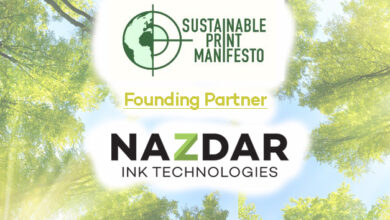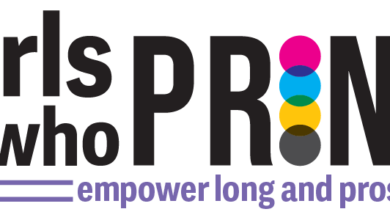
Inkjet printing offers affordability, high quality, ease of maintenance, and durability for customers. Solvent, resin, UV, and aqueous-based inkjet ink offer a variety of benefits for a wide range of applications. Here are some of the best uses for each type of ink:
Solvent ink
Solvent print head technology has improved, leading to reliable, long-lasting print heads, which help the advanced printers of today deliver high-quality output that can reproduce an extensive range of colors — all at a low total cost of ownership — ideal for vehicle wraps, outdoor signage, canvas reproductions, and stickers and decals.

Some can achieve 98.2% of the Pantone color library, making it easier to print specific spot colors. This ability to produce specific brand colors accurately and consistently over multiple jobs is key in today’s competitive digital print market and essential for PSPs to print on a variety of applications and media.
Resin ink

Unlike solvent ink, resin ink does not require an off-gassing period before lamination. Its ability to dry instantly allows for immediate lamination and quicker project turnaround times. From fabrics and wallpapers to uncoated papers and adhesive vinyl, resin ink can cure on an incredibly wide range of media types. Digitally printed wallpaper, which has become a popular trend among designers recently, tends to work especially well with resin ink due to the ink’s long-term durability and low odor.
Designed to meet evolving trends, resin printers can help print shops further expand applications and provide customers with high-quality and consistent output.
UV ink

One of the main advantages of UV ink is the ability to print on a variety of different rigid and flexible substrates. Gamut expanding inks, such as red and gray ink in addition to standard colors, help ensure that brand colors are accurate and vibrant.
In addition, white ink is included in many UV printers for use on wood, glass, and metal and offers unique applications when the white ink is opaque enough to effectively block the light. Varnish is an option for added texture, shine, or special effects and is a great way for PSPs to help offer unique and differentiated signs.
Aqueous ink
The biggest draw of aqueous-based printers is the incredible color gamut ideal for professional photography, graphic art, proofing, and fine art, as well as long-lasting print permanence with certain aqueous pigment inks. Advanced aqueous pigment ink is consistent and repeatable, which is especially important for commercial proofing environments where there are minimal tolerances and high expectations for consistent color and quality.

Because aqueous-based prints are also optimized for indoor signage, and short-term signage and aqueous printers are considerably easier to operate, they are easy additions to sign shops for both print job proofing and short-term signage.



